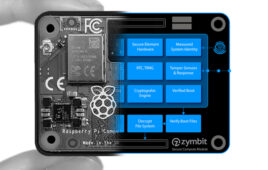Stories abound of artificial intelligence (AI) revolutionizing industrial processes and space exploration. But AI is also assisting scientists down below, in the deep sea environment.
Researchers at North Carolina State University have developed an AI program that can automatically identify species or microscopic marine organisms. The scientists hope this is the first step in developing a robotic system that will provide a clearer picture of the world’s oceans, both past and present.
The program developed is initially capable of identifying six species of forams―organisms that have been prevalent in the Earth’s oceans for more than 100 million years. Forams are neither plant or animal, and when they die they leave behind tiny shells. By examining the shells and making chemical measurements, scientists can identify which forams thrive in different ocean environments as well as determine when the shell was formed.
Because the foram evaluation process is lengthy and tedious, the interdisciplinary research team is working to automate the process. The current system works by placing a foram under a microscope capable of taking photographs. An LED ring shines light onto the foram from 16 directions – one at a time – while taking an image of the foram with each change in light. These 16 images are combined to provide as much geometric information as possible about the foram’s shape. The AI then uses this information to identify the foram’s species.
The scanning and identification takes only seconds, and is already as fast ―or faster― than the fastest human experts.
“At this point, the AI correctly identifies the forams about 80 percent of the time, which is better than most trained humans,” says Edgar Lobaton, an associate professor of electrical and computer engineering at North Carolina State University and co-author of a paper on the work.
“But this is only the proof of concept. We expect the system to improve over time, because machine learning means the program will get more accurate and more consistent with every iteration. We also plan to expand the AI’s purview, so that it can identify at least 35 species of forams, rather than the current six.”
Lobaton and his collaborators have received a grant from the National Science Foundation (NSF) to build the fully-functional robotic system.
“This work is important because oceans cover about 70 percent of Earth’s surface and play an enormous role in its climate,” says Tom Marchitto, an associate professor of geological sciences at the University of Colorado, Boulder, and corresponding author of the paper, “Automated species-level identification of planktic foraminifera using convolutional neural networks, with comparison to human performance.”
“Forams are ubiquitous in our oceans, and the chemistry of their shells records the physical and chemical characteristics of the waters that they grew in. These tiny organisms bear witness to past properties like temperature, salinity, acidity and nutrient concentrations. In turn we can use those properties to reconstruct ocean circulation and heat transport during past climate events.
“This matters because humanity is in the midst of an unintentional, global-scale climate ‘experiment’ due to our emission of greenhouse gases,” Marchitto says. “To predict the outcomes of that experiment we need a better understanding of how Earth’s climate behaves when its energy balance is altered. The new AI, and the robotic system it will enable, could significantly expedite our ability to learn more about the relationship between the climate and the oceans across vast time scales.”
Filed Under: AI • machine learning, Product design




